The fierce beauty of classic Japanese movie monsters is dramatically captured in these black velvet paintings by artist Bruce White.
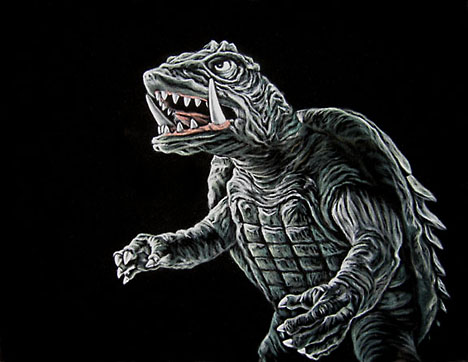
Gamera

Mechagodzilla

Godzilla
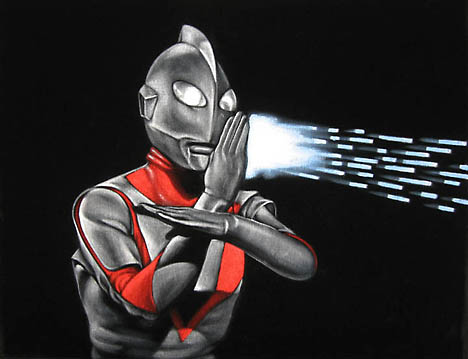
Ultraman
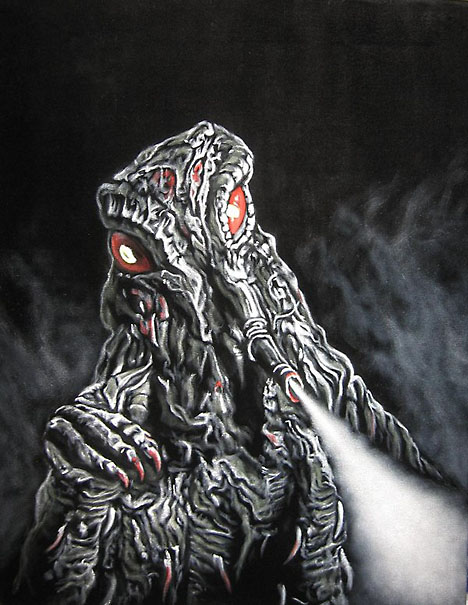
Hedorah
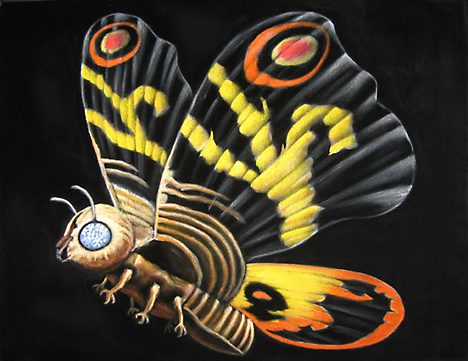
Mothra
[Via: @bonniegrrl]
The fierce beauty of classic Japanese movie monsters is dramatically captured in these black velvet paintings by artist Bruce White.

Gamera

Mechagodzilla

Godzilla

Ultraman

Hedorah

Mothra
[Via: @bonniegrrl]
The illustrious Rinpa Eshidan art crew has re-emerged with a dazzling new time-lapse painting performed on a skate ramp.
In the late 19th and early 20th century, enigmatic photographer T. Enami (1859-1929) captured a number of 3D stereoviews depicting life in Meiji-period Japan.
A stereoview consists of a pair of nearly identical images that appear three-dimensional when viewed through a stereoscope, because each eye sees a slightly different image. This illusion of depth can also be recreated with animated GIFs like the ones here, which were created from Flickr images posted by Okinawa Soba. Follow the links under each animation for the original stereoviews and background information.
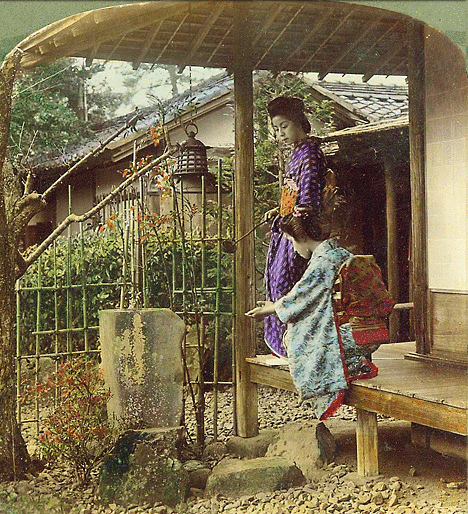
[Geisha washing their hands in the garden]
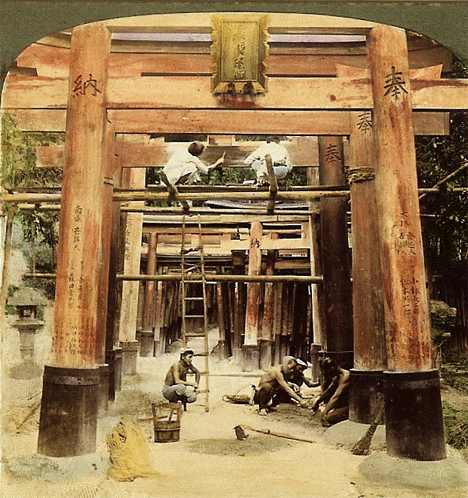
[Torii gates at Inari shrine, Kyoto]
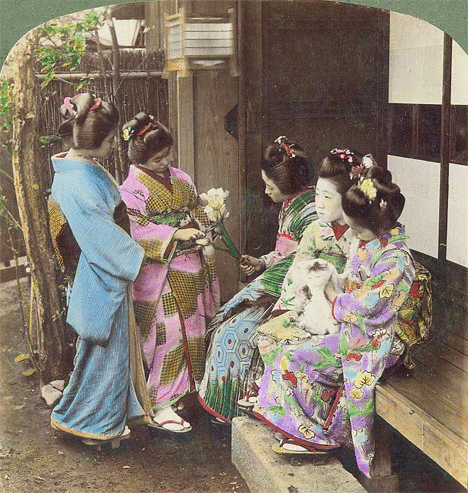
[Geisha girls with flowers and cat]
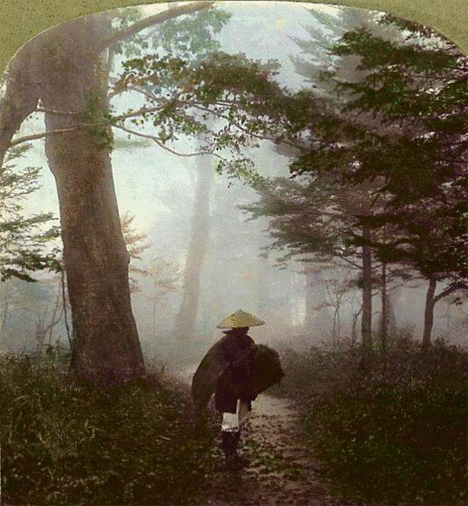
[Traveler in the mountain fog near Chujenji]
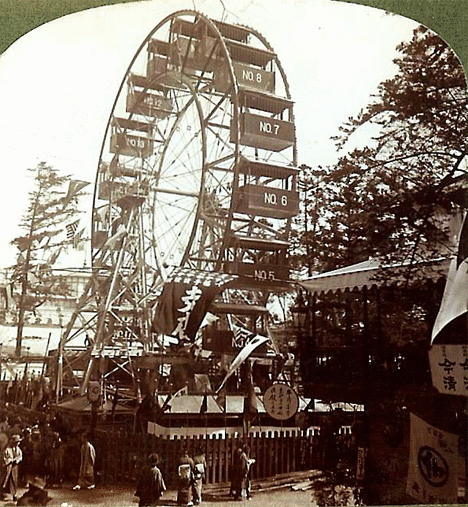
[Tokyo Industrial Exposition, Ueno Park, 1907]
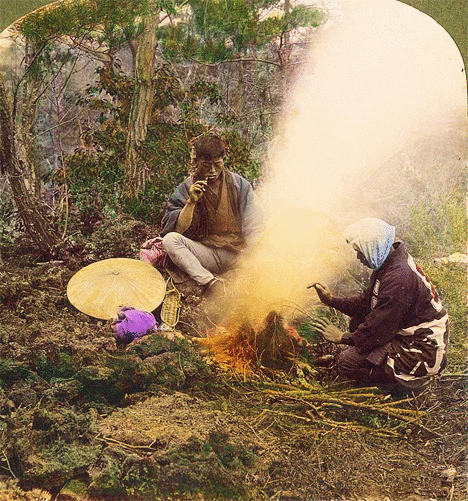
[Campfire on the peak of Mt. Myogi, Nakasendo]
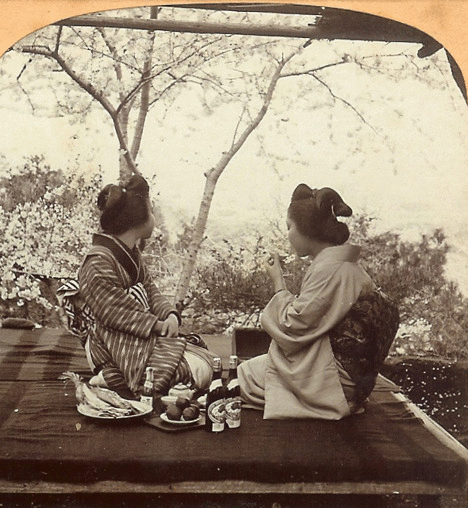
[Geisha drinking beer in the park]
Special effects studio Tsuburaya Productions has released some video of a fancy new animatronic Gomora suit being tested in a parking lot.
+ Video
The Gomora suit — the first in Tsuburaya’s new line of “Dekaiju” giant animatronic monster costumes — stands 3 meters (10 ft) tall and measures 6 meters (20 ft) long from nose to tail. In addition to moving its head, mouth and arms, the glowing-eyed monster can shriek and spit vapor. The studio plans to unleash the new and improved Gomora at promotional events for the upcoming movie “Mega Monster Battle: Ultra Galaxy Legend.”

Electronics giant NEC has reportedly developed a wearable optical device that interprets foreign languages and projects a real-time translation directly onto the retina, enabling the wearer to communicate with other language speakers without an interpreter.
The prototype device — called “Tele Scouter” — consists of a tiny retinal display and microphone mounted on an eyeglass frame. The microphone picks up the conversation and transmits it to a small computer worn on the waist, which converts the speech to text and translates it into the user’s native language.
The retinal display projects the text directly into the user’s peripheral vision, allowing them to maintain eye contact with their conversation partner while reading the translation. According to the developers, the Tele Scouter can be used for hours on end without eye strain, because the wearer does not have to focus their eye on the displayed text.
Although NEC plans to put a version of the Tele Scouter on the market in 2010, the company admits the device’s translation capabilities are insufficient for real-world applications. So for now, the initial plan is to market the device as a wearable data display for employees in factories and shops.
According to the company, the device can provide instant hands-free access to data such as diagrams and operating instructions, allowing workers to perform tasks more efficiently and accurately. Other possible future applications include car navigation systems and video games.
[Source: Yomiuri]
This month, in the spirit of Halloween, Fukui-based yōkai painter Matt Meyer is creating daily portraits of Japan’s traditional monsters and adding them to his A-Yokai-A-Day collection. Here are a few images from the site, which will be updated with a lovely new terror each day until the end of October.
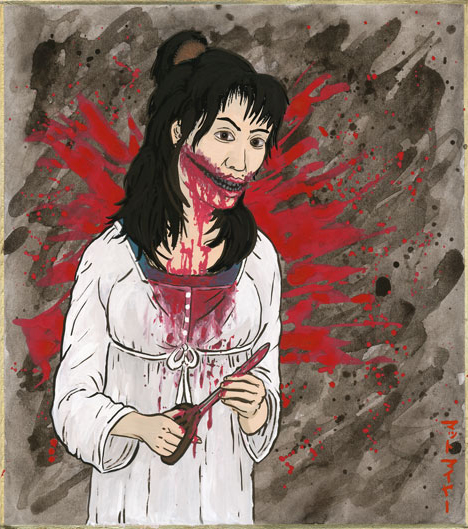
Kuchisake-onna — slit-mouth woman
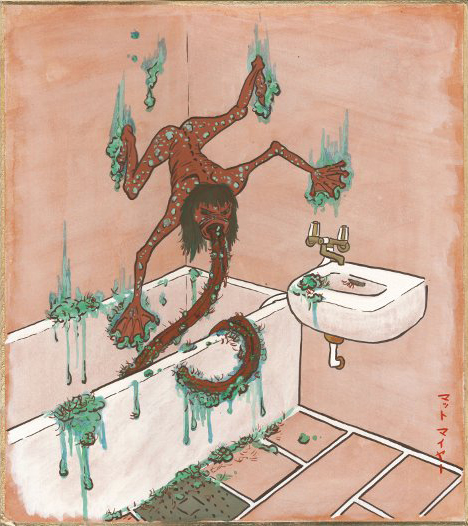
Akaname — bathroom scum licker
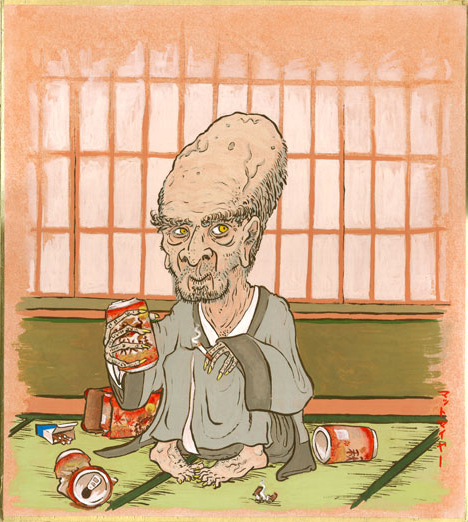
Nurarihyon — yōkai boss
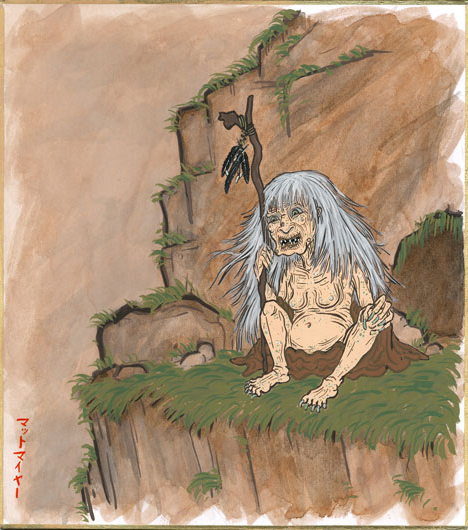
Yama-uba — mountain hag
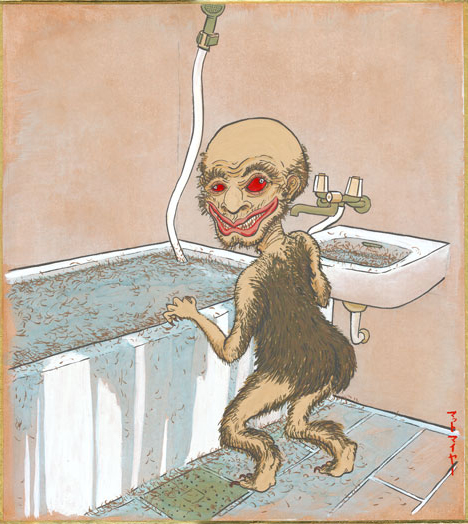
Hyōsube — river imp
[Link: A-Yokai-A-Day]
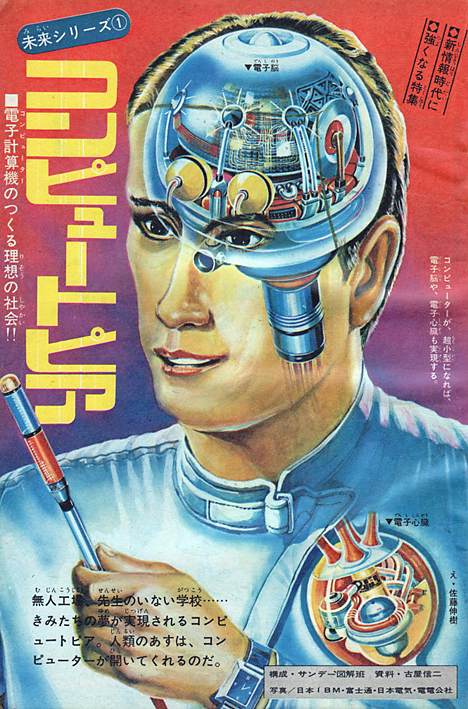 [+]
[+]
In 1969, Shōnen Sunday magazine featured a series of illustrated articles entitled "Computopia," which depicted life in a pleasant future pervaded by computers. Here are three illustrations from the series (1, 2, 3).
* * * * *
- Future Classroom
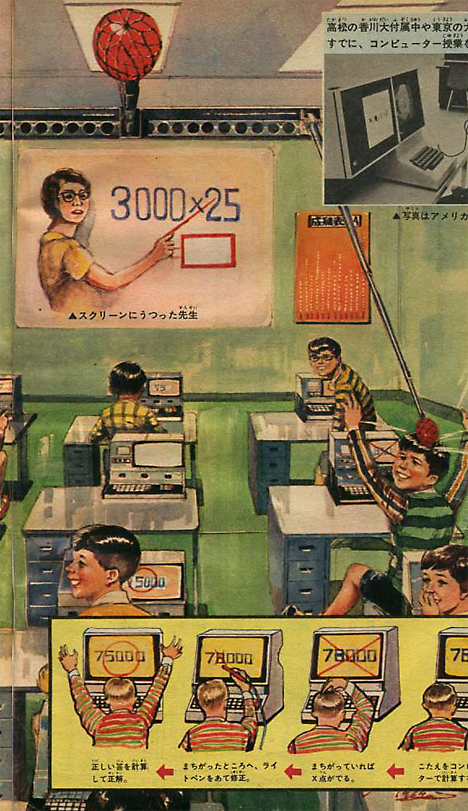
"The Rise of the Computerized School," illustrated by Shigeru Komatsuzaki, takes a peek inside the classroom of the future, where the teacher is an image on a screen and students sit at desks equipped with computers. When the teacher presents a problem, the students input the answer into their computers. If an answer is incorrect, the students use a light pen to make revisions on the monitor until the computer says it is right.
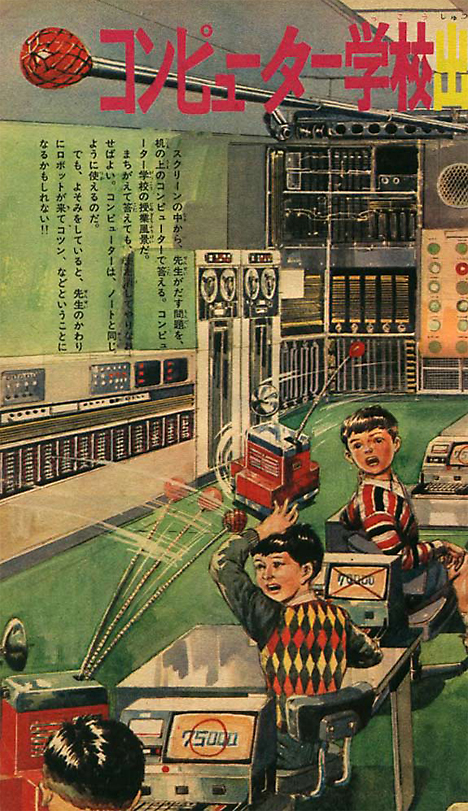
For the purpose of maintaining order, the future classroom will come equipped with watchful robots that rap students on the head if they lose focus or act up. [View full image]
* * * * *
- Future Home
This illustration by Toshio Okazaki, entitled "Computer Life in 20 Years," depicts what the typical household might look like 20 years in the future -- in 1989 -- after computers have become an integral part of daily life.
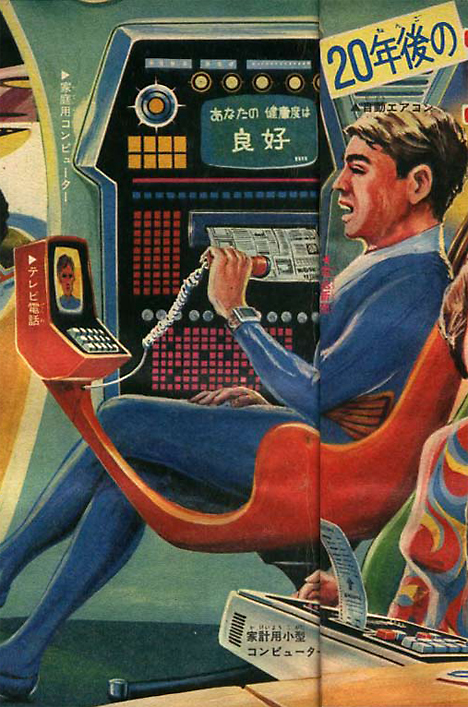
In this high-tech home, dad chats on the videophone while the wall-mounted home computer spits out a newspaper and the automatic air conditioner cools the room.
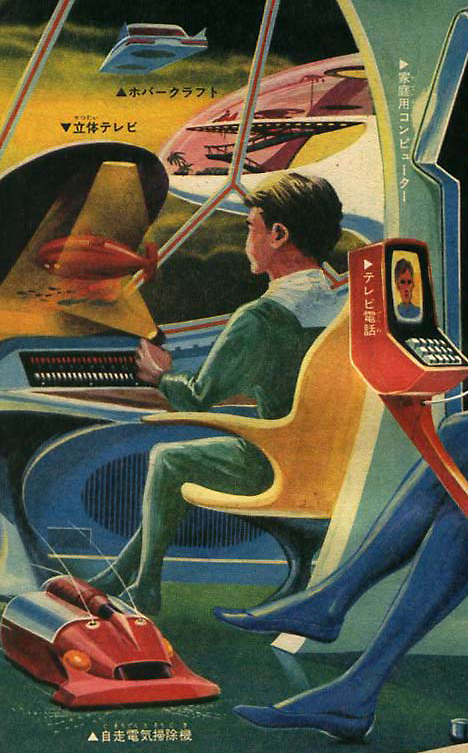
Junior's eyes are glued to the 3D TV while an autonomous vacuum robot cleans the floor nearby. A hovercraft floats in the sky outside the window.
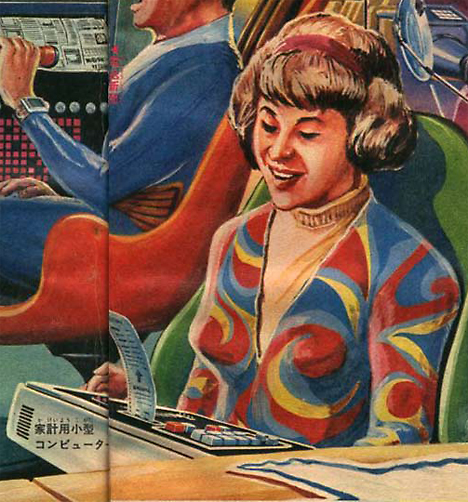
Mom performs calculations on a miniature home computer.
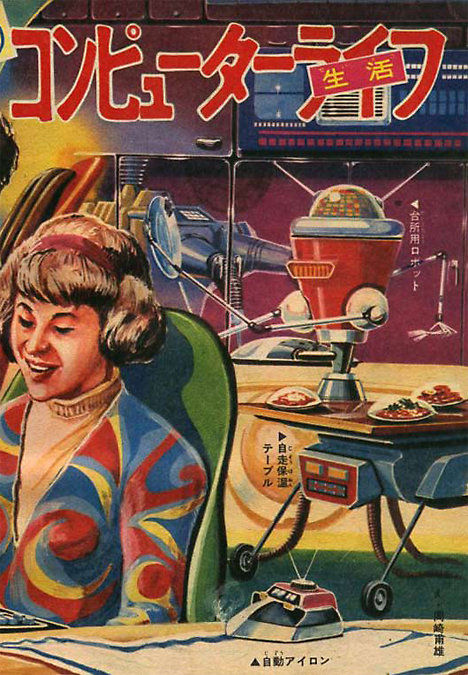
The home is also furnished with nifty devices such as an automatic iron, an autonomous wheeled table that keeps food warm, and a kitchen robot that sets the table and takes care of the dishes. [View full image]
* * * * *
- Future Hospital
"The Amazing Unmanned Operating Room," illustrated by Teruya Yamamoto, takes a peek inside the computerized hospital of the future.
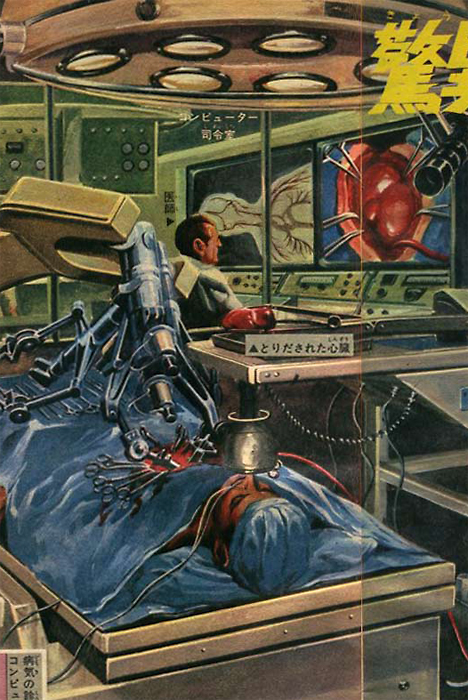
In this unmanned operating room, a computer-controlled robot arm is performing a heart transplant with cool precision. The patient's heart has been removed and placed on the adjacent table. Before inserting the new artificial heart, the computer waits for instructions from the human doctor, who is monitoring the procedure on a screen in the next room. [View full image]
[Via: 昭和の雑誌広告・懐かしモノ]
Towering over Wakasu Kaihin Park in Tokyo's Koto ward is one of the largest wind turbines in Japan, a 100 meter (330 ft) tall power generator built by Ishikawajima-Harima Heavy Industries (IHI) in 2004, which outputs 1,950 kilowatts of electricity and is adorned with images of Astro Boy, Phoenix, Black Jack, Sharaku (the Three-eyed One), Unico and other Osamu Tezuka manga characters.
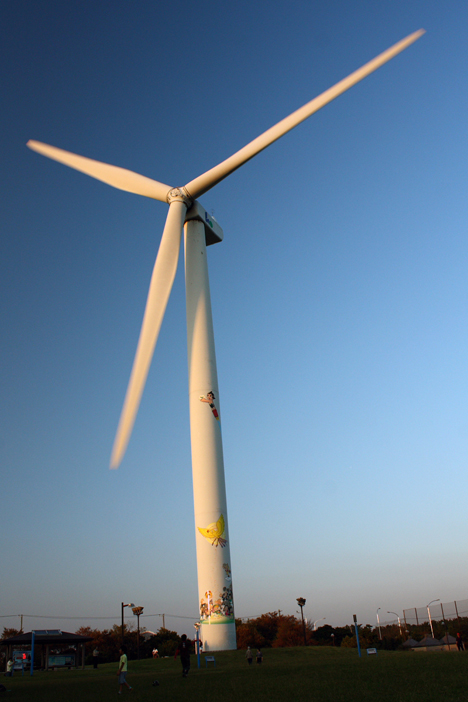
[+]
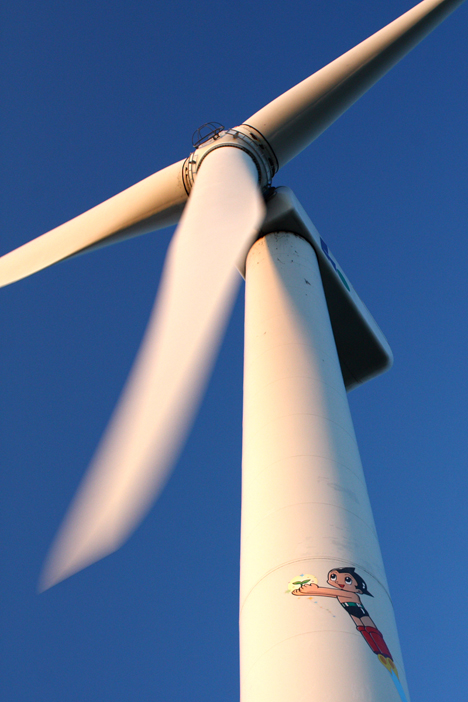
[+]
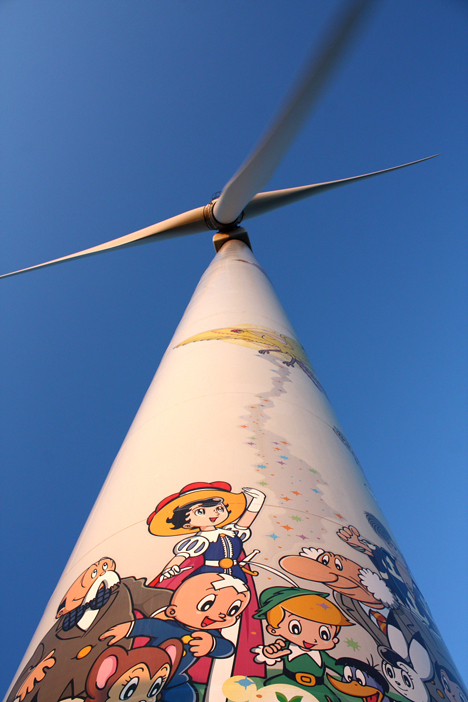
[+]
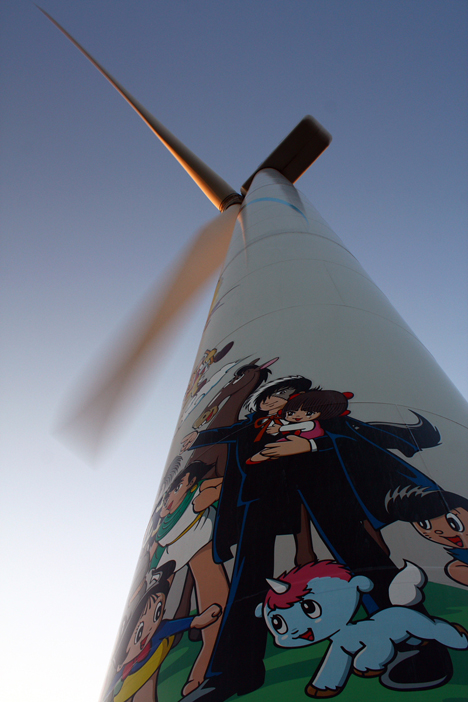
[+]
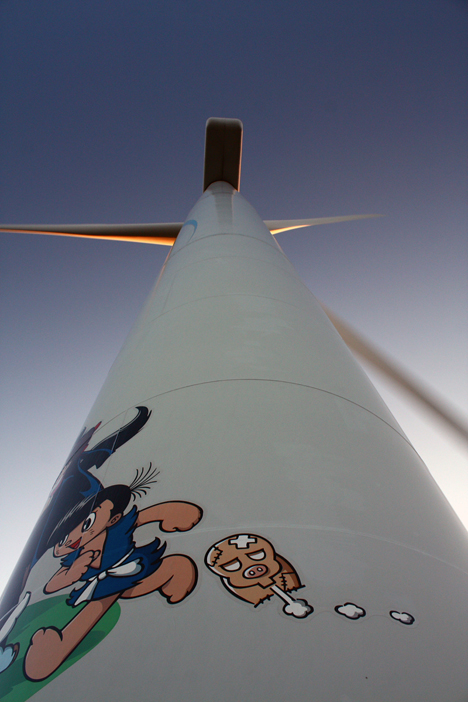
[+]
A robotic patient on display at the Security & Safety Trade Expo (RISCON) in Tokyo exhibits symptoms of the H1N1 flu virus.
+ Video
According to this NTV news report, the life-sized humanoid robot was developed as a realistic training aid for medical workers. In addition to sporting a suit of human-like skin, the robot sweats, convulses, moans, cries tears, and exhibits symptoms not unlike a real human patient infected with the H1N1 virus. If the robot does not receive the proper treatment, the symptoms gradually worsen until it stops breathing.
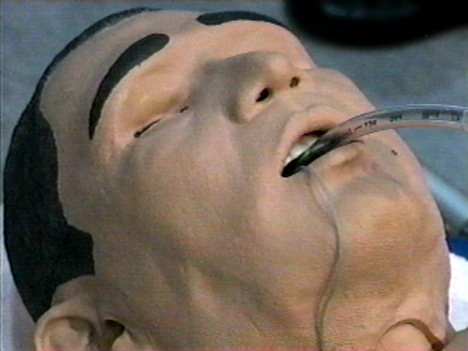
The news report fails to mention who created the robot, but it looks like it might be a distant cousin of the emergency care simulator developed by IMI.